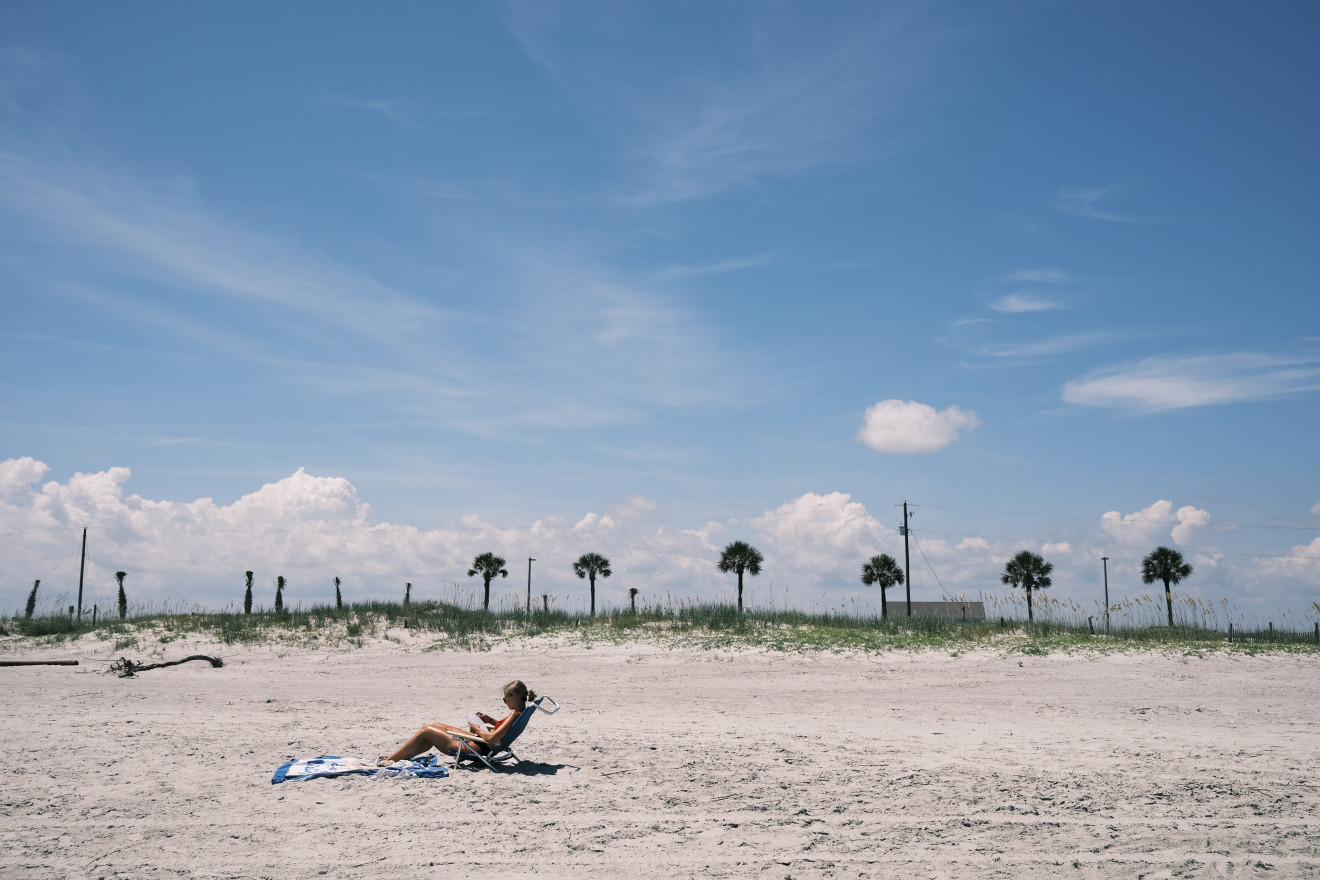
Folly Beach in Charleston, South Carolina (Taylor Heery/Unsplash)

Folly Beach in Charleston, South Carolina (Taylor Heery/Unsplash)
In South Carolina, we talk a lot about the heat.
Warm weather begins in March and lasts until late October in South Carolina — and our summers are not for the faint of heart. My hometown of Columbia, the capital city, once had the slogan of “Famously Hot” and still boasts the Famously Hot New Year event and Famously Hot Pride festival every year.
As sweaty and miserable as it can be, we think of the heat as a point of pride. If you can last through a blistering South Carolina summer — packed with the thick humidity of the coastal lowcountry, 100-plus-degrees days, and mosquitos that latch to your skin — you can survive anything. The heat is part of the Southern experience, and it comes with the territory.
The weather is the reason that my mother moved to South Carolina from Indiana, after visiting in December and seeing people wearing shorts. It’s the reason that people visit the tourist hotspots of Charleston, Hilton Head, and Myrtle Beach year round, which brings in more than $20 billion to the state’s economy. The environment is reason why the state was founded on plantation agriculture and small farming and why the coastal port of Charleston became an economic hub for business and slave trade in the early 1800s.
The weather and the environment are deeply intertwined in the culture of South Carolina and they cannot be divorced. In many ways, the cultural landscape of South Carolina mirrors the physical landscape.
But like elsewhere, South Carolina is feeling the impact of climate change. The weather gets hotter, the water level gets higher, and the hurricanes get fiercer. And yet the state government lacks a comprehensive plan to combat climate change, leaving local officials to grapple with flooding, heat, erosion, and drought in their communities. The Johns Hopkins Bloomberg School of Public Health and Trust for America’s Health found South Carolina tied with Louisiana, Kentucky, and Mississippi as the second most vulnerable state to climate change. Of these four states, South Carolina is the second least prepared to deal with negative health outcomes.
In 2015, South Carolina faced a “thousand year flood” from record-breaking rainfall. The flood, exacerbated by outdated infrastructure and failing dams, hit Columbia particularly hard, killing 19 people. In the six years since, four major hurricanes have pummeled the state, and “hurrications” away from school and work have become a new fall routine.
Charleston—the coastal city that has topped Travel + Leisure’s “Best Cities in the U.S.” list for nine consecutive years—is one of the most vulnerable cities in the country to rising sea levels. The Union of Concerned Scientists notes that Charleston’s tidal flooding, or sunny day flooding, averaged six times a year in 1970 but by 2045 is projected to rise to 180 times per year. When my cousin started her freshman year at the College of Charleston, she made sure to buy a new pair of rainboots so she could wade through the water that regularly inundated the downtown campus.
The warming, rising seas are killing wildlife and plant species, resulting in ghost forests where salt marshes once stood and fewer shrimp for trawlers off the coast.
And then there’s the heat. The hot, sticky South Carolina summers seem to stretch longer and longer. While the heat has long been a point of pride, it is quickly becoming a source of discomfort and anxiety. Extreme heat kills more than 700 Americans each year; disproportionately people in low-income neighborhoods, of which there are many in the state. Knowing that this is the future, I struggle to embrace the charm of the weather that I used to feel.
What happens when the “thousand year flood” comes every decade, or when the “unseasonably warm weather” becomes the new norm?
We know that climate change will affect the physical and environmental conditions around us — although Americans are still less concerned about the personal impact than people in other advanced economies — but we don’t think as much about how climate change will impact our culture. In South Carolina, the weather and the landscape is the culture. It’s sweating at football games in the fall, kayaking the rivers, and smelling the salt air of the pluff mud marsh. The culture is cotton fields and their dark history, soon to go dry from heat and drought. The culture is the Gullah/Geechee communities in the Sea Islands, which are being swallowed by the ocean.
But culture, and the creativity associated with it, provides an opportunity for new solutions to climate change. And while there are practical solutions, there are also cultural and emotional adaptations that are necessary to confront the climate crisis. This means redefining historic preservation in Charleston, where picturesque 150-year-old homes are being elevated to avoid the flooding that already comes more than 75 days a year. It means curbing our insatiable desire to build high-rises, beach houses, and businesses on top of salt marshes where they don’t belong. And it means listening to, learning from, and collaborating with communities that have ties to land that is being threatened.
South Carolinians have long defined their identity on the sunshine, beaches, mountains, rivers, farm fields, and heat of the state. If we care so deeply for that landscape, then we should care as deeply about the ways it’s being threatened, and how we work to find solutions.
We’re famously hot, but we’re only getting hotter. When will it be too much?
—
Editor’s note: Check back each day during COP26 for more pieces in Planet Forward’s Climate Hits Home series.“